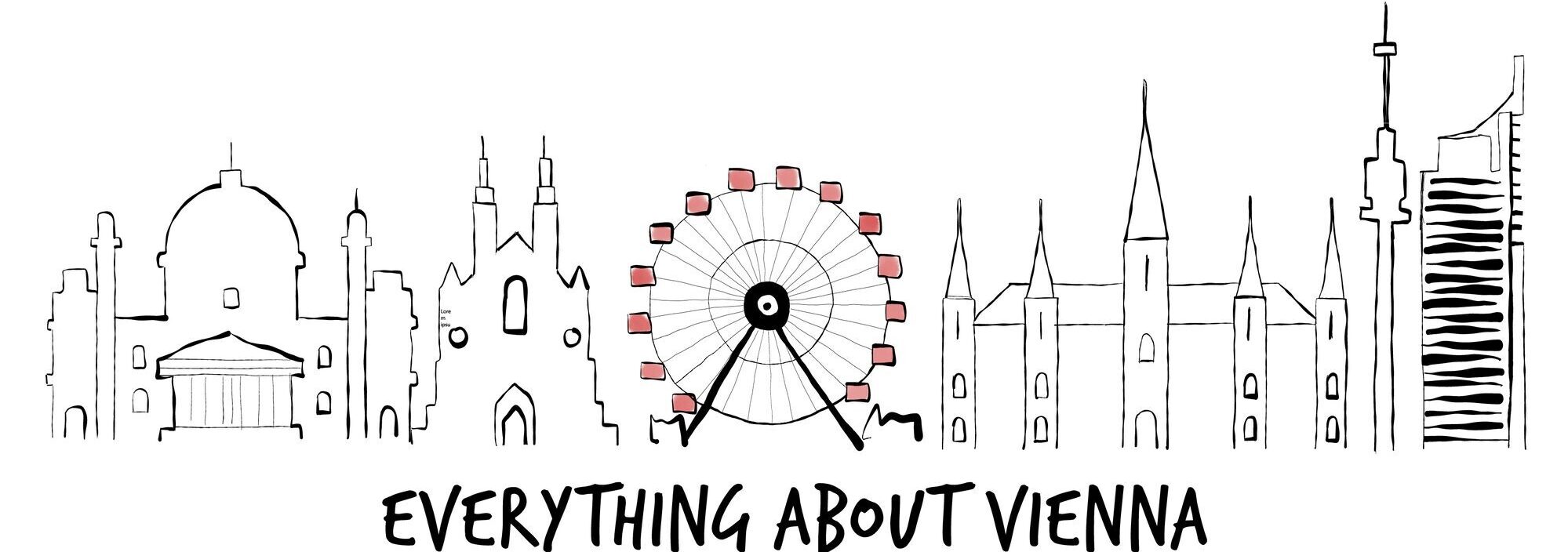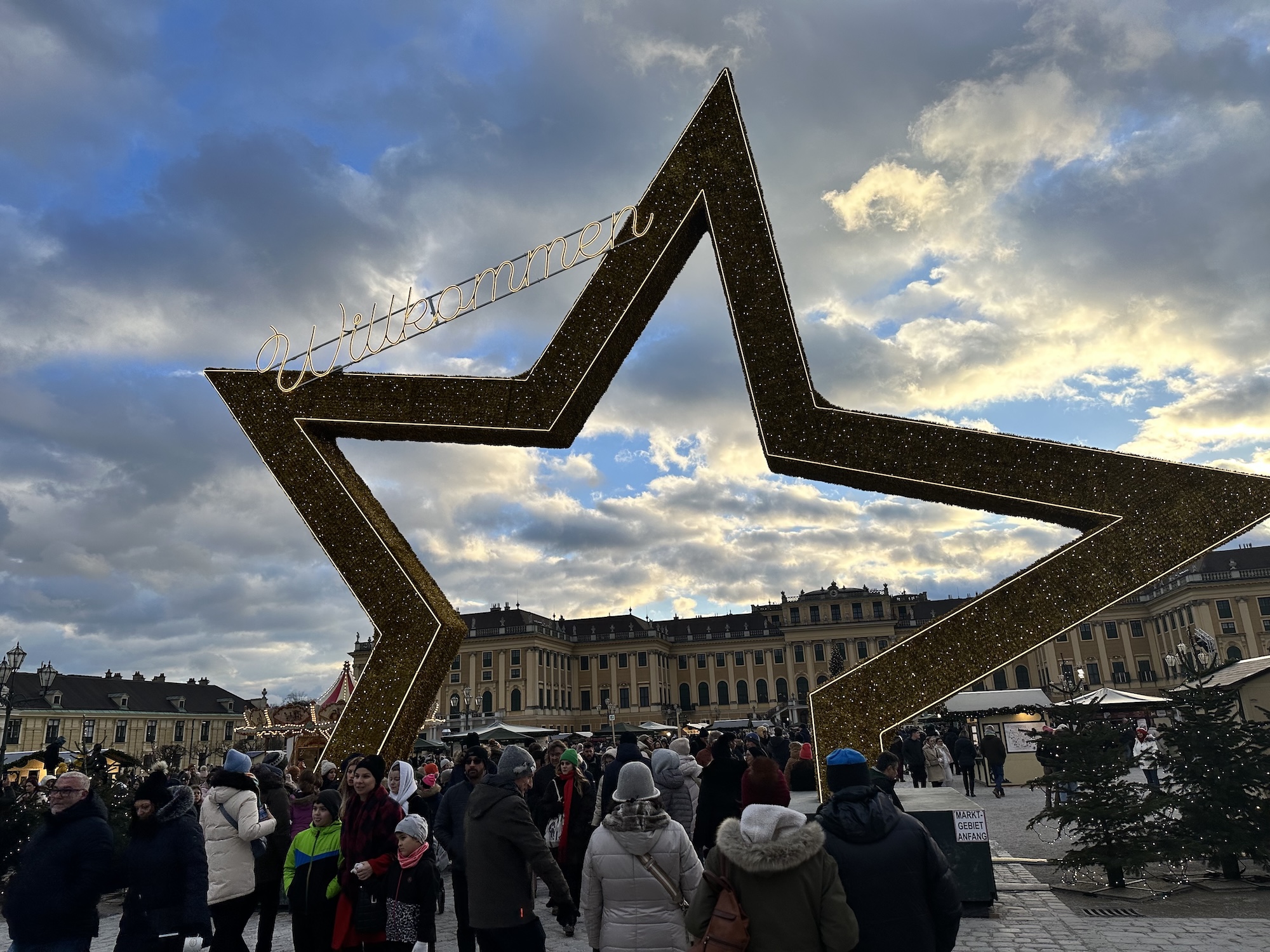The scent of roasted almonds drifts through the cold air. Somewhere, a choir sings soft carols. In front of a grand palace, families gather around steaming mugs of punch, their cheeks rosy from the chill. Meanwhile, down a cobbled side street, flickering lanterns guide the way to a small market selling hand-carved nativity figures.
This is Vienna during Advent, a city where Christmas isn’t just a season, but a mood. Across the capital, more than a dozen Christmas markets light up the city, each with its rhythm, flavours, and charm. Some are grand and opulent, set against the backdrop of imperial buildings. Others are cosy and creative, tucked away in side streets or nestled in quiet courtyards.
From mid-November until Christmas, and in some cases even beyond, Vienna’s squares and palaces transform into festive gathering places. Whether you’re hunting for a unique handmade gift, sipping mulled wine under the stars, or simply taking in the atmosphere, Vienna’s Christmas markets offer a warm welcome in the heart of winter.
When do Christmas markets in Vienna take place?
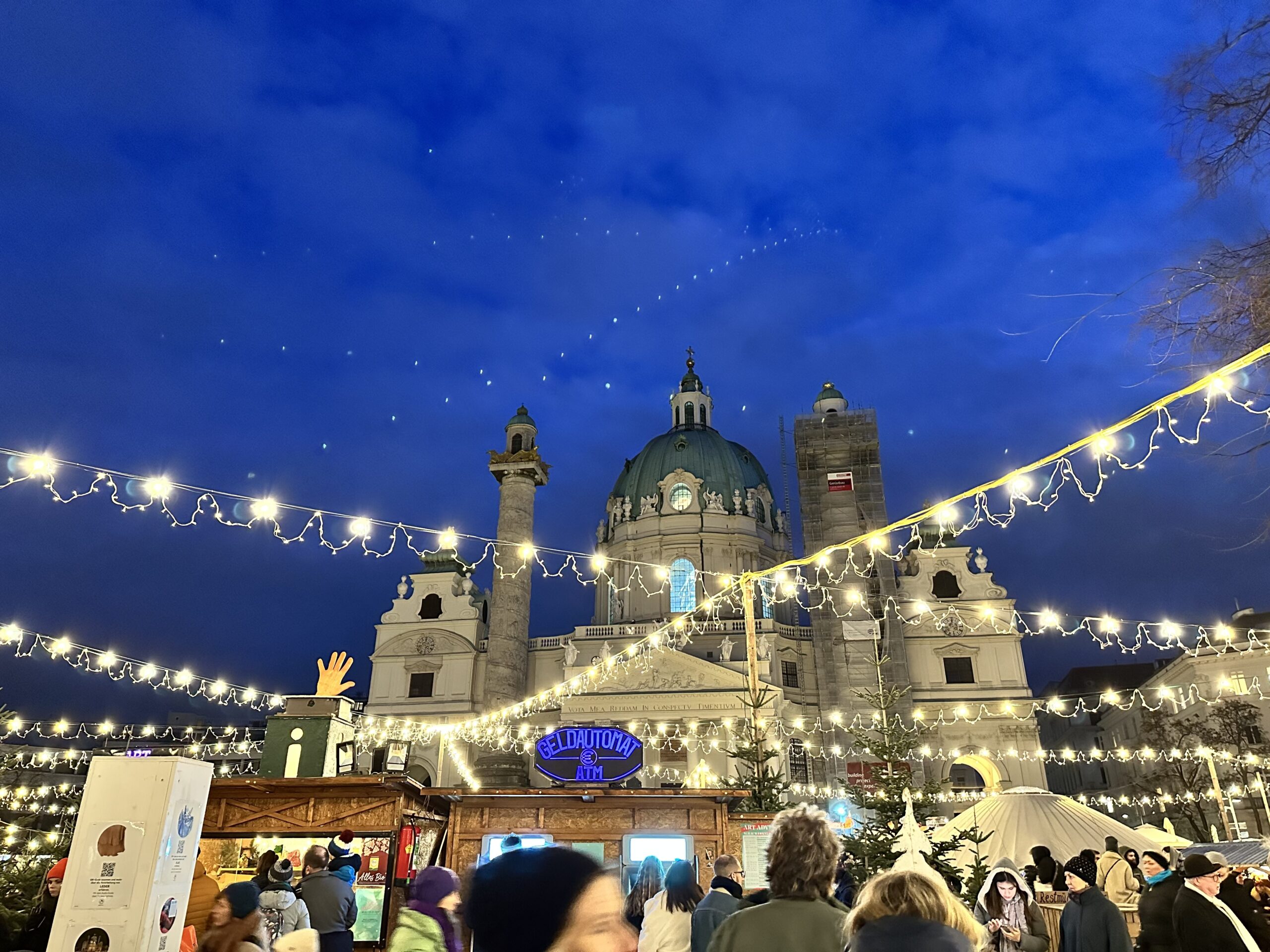
Most Christmas markets in Vienna open in mid-November and run until Christmas Eve. Some stay open a little longer, welcoming visitors until New Year’s Eve or even early January.
The main season begins around the third weekend of November, when market stalls open their shutters, city trees are lit for the first time, and the scent of punch and spices returns to the streets. The busiest period is typically the first three weeks of December, especially during weekends, when both locals and tourists flock to the markets.
Opening hours vary, but most markets are open from late morning until around 9 or 10 PM. While weekday visits offer a quieter experience, evenings are when the festive lights and atmosphere truly come alive. On December 24, many markets close earlier in the afternoon, and a few reopen after Christmas with a more “New Year’s” theme.
It’s always wise to check specific times if you’re planning around a certain location, but as a rule of thumb: from mid-November to December 23, you’ll find Christmas magic all over Vienna.
Local tip: Want to enjoy the markets without the crowds? Head to the larger markets just after they open, late morning or early afternoon on weekdays tends to be the quietest time.
Vienna’s top 8 Christmas markets
Vienna’s best-known Christmas markets are not only visually stunning, they each have a distinct personality. From fairy-tale palaces to narrow cobbled streets, here’s a quick guide to the most iconic markets across the city.
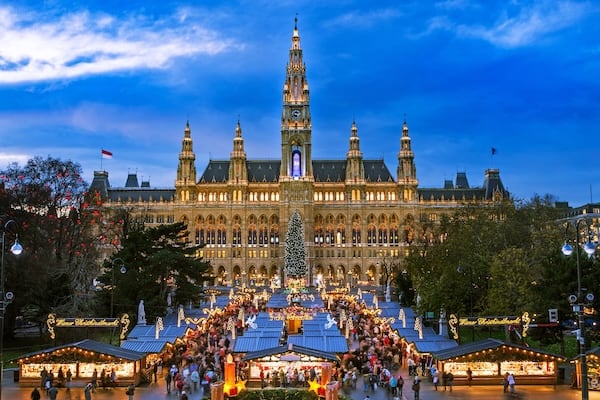
Rathausplatz
The city’s most iconic market with over 100 stalls, a giant tree, and a festive skating trail.
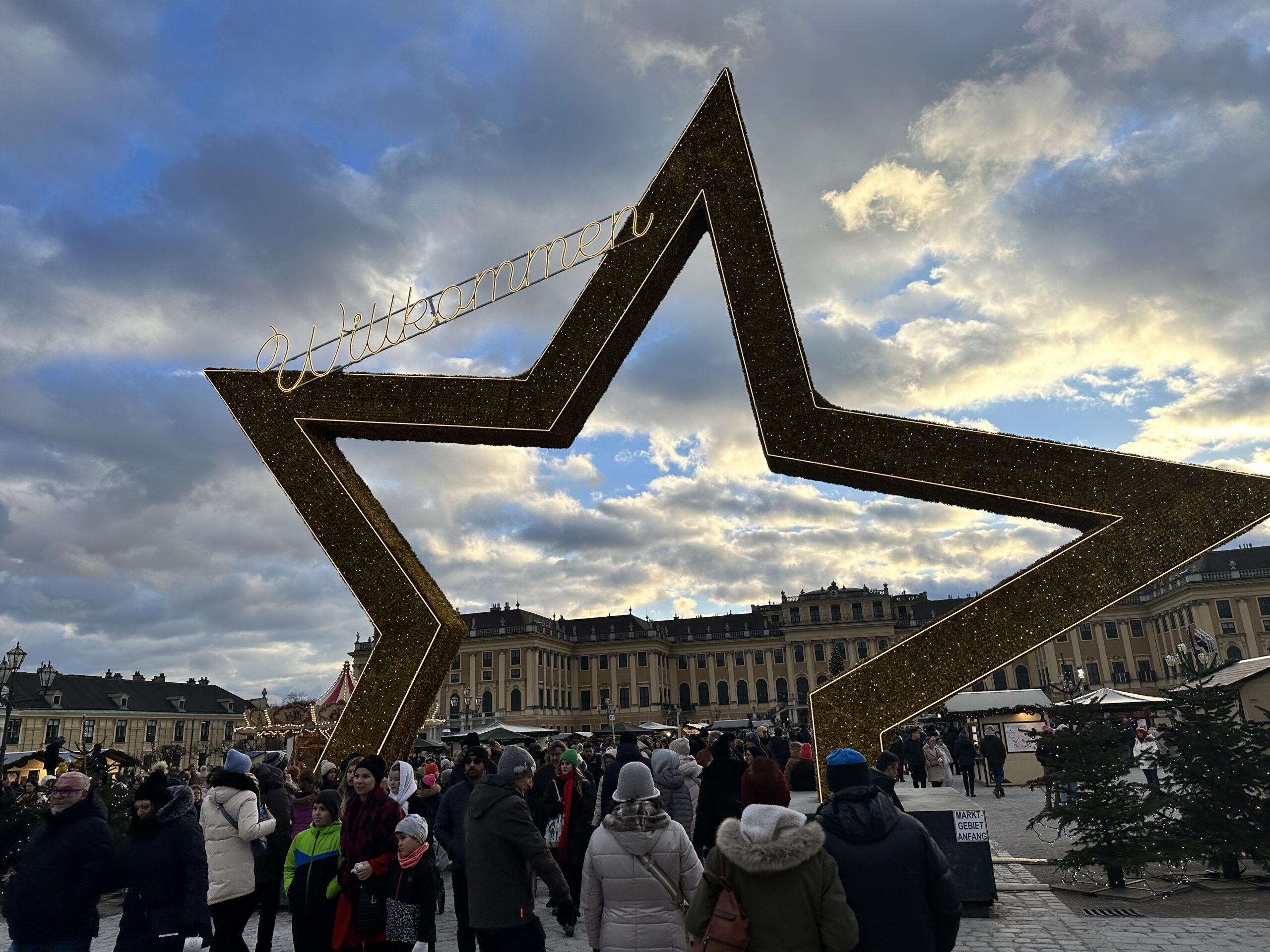
Schönbrunn Palace
Imperial charm and artisanal gifts in the courtyard of Vienna’s famous palace.
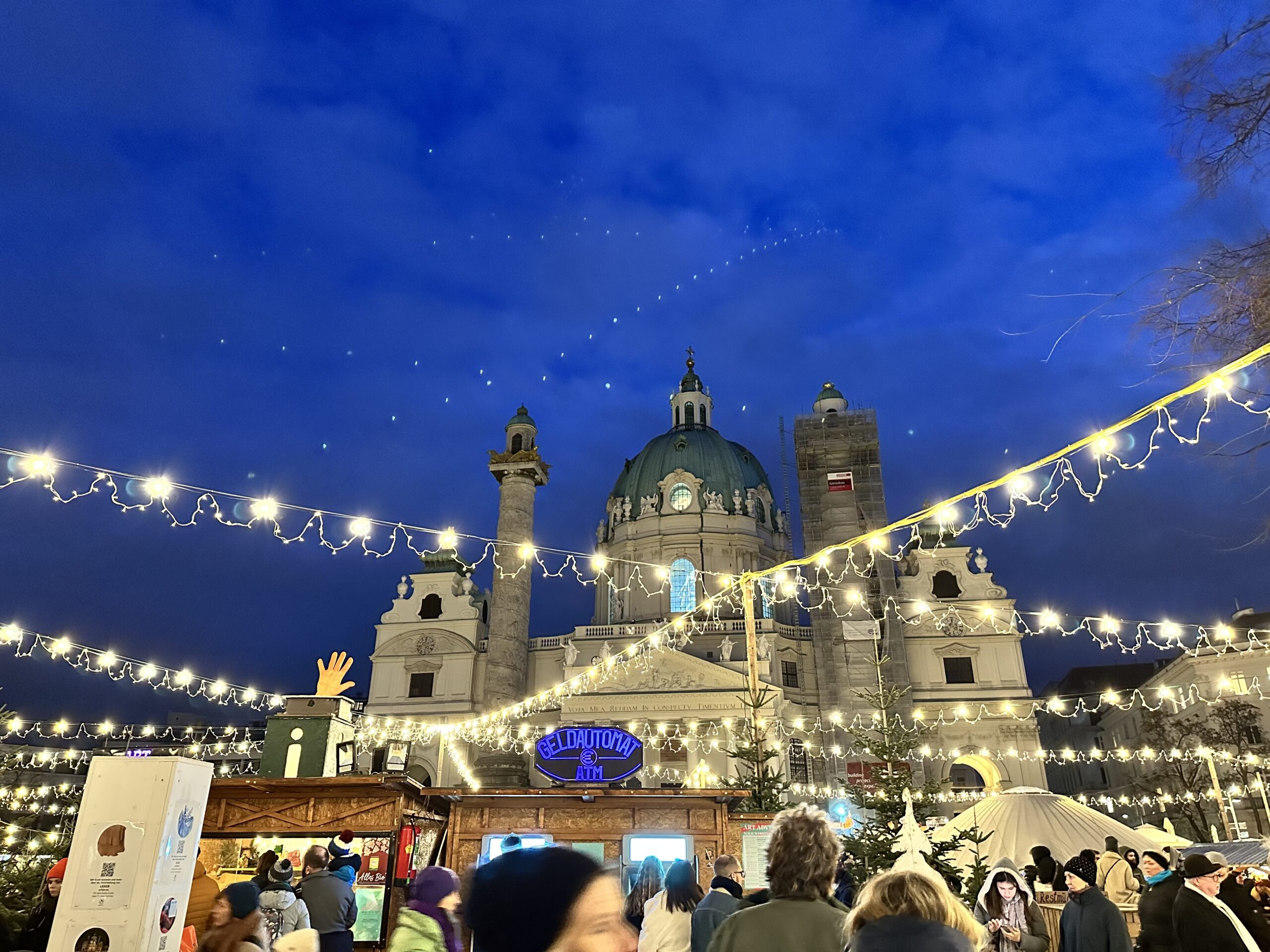
Karlsplatz (Art Advent)
Creative, sustainable, and fully organic, this market is a local favourite.
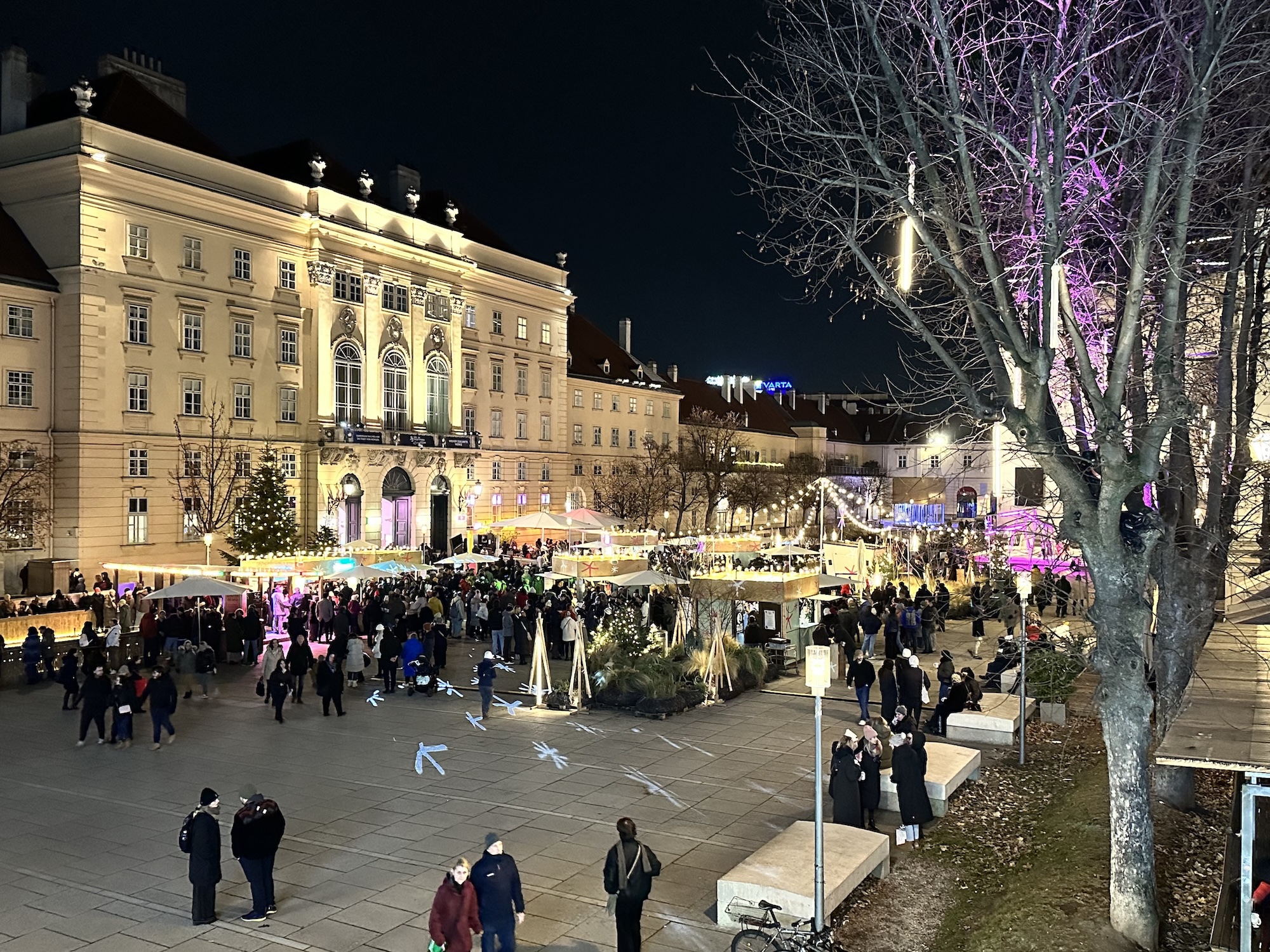
Spittelberg
A romantic market in narrow streets with artisan goods and cozy charm.
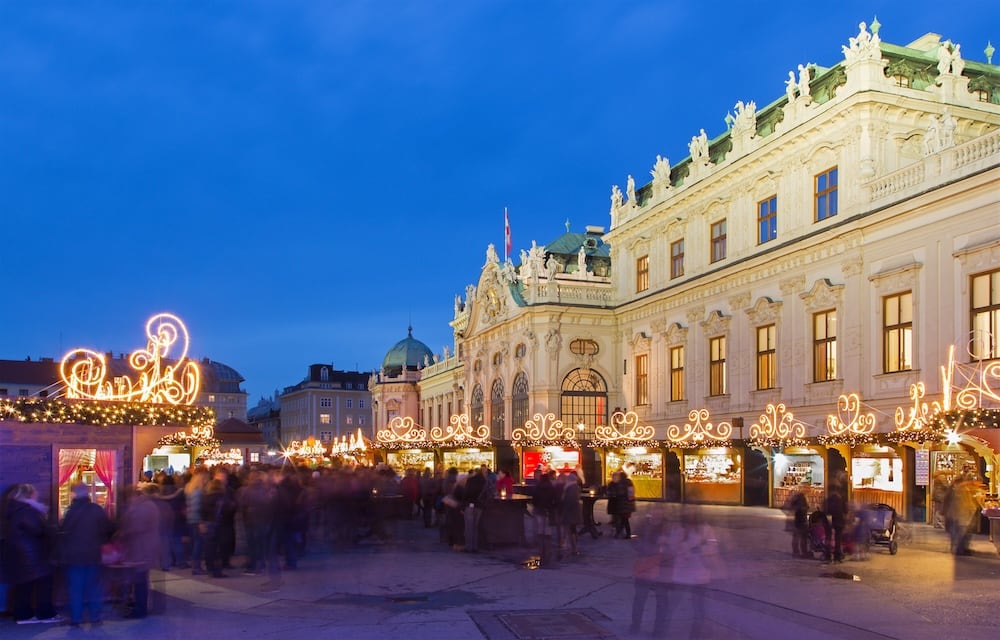
Belvedere Palace
Smaller but stunning, with a baroque backdrop and reflections in the palace pond.
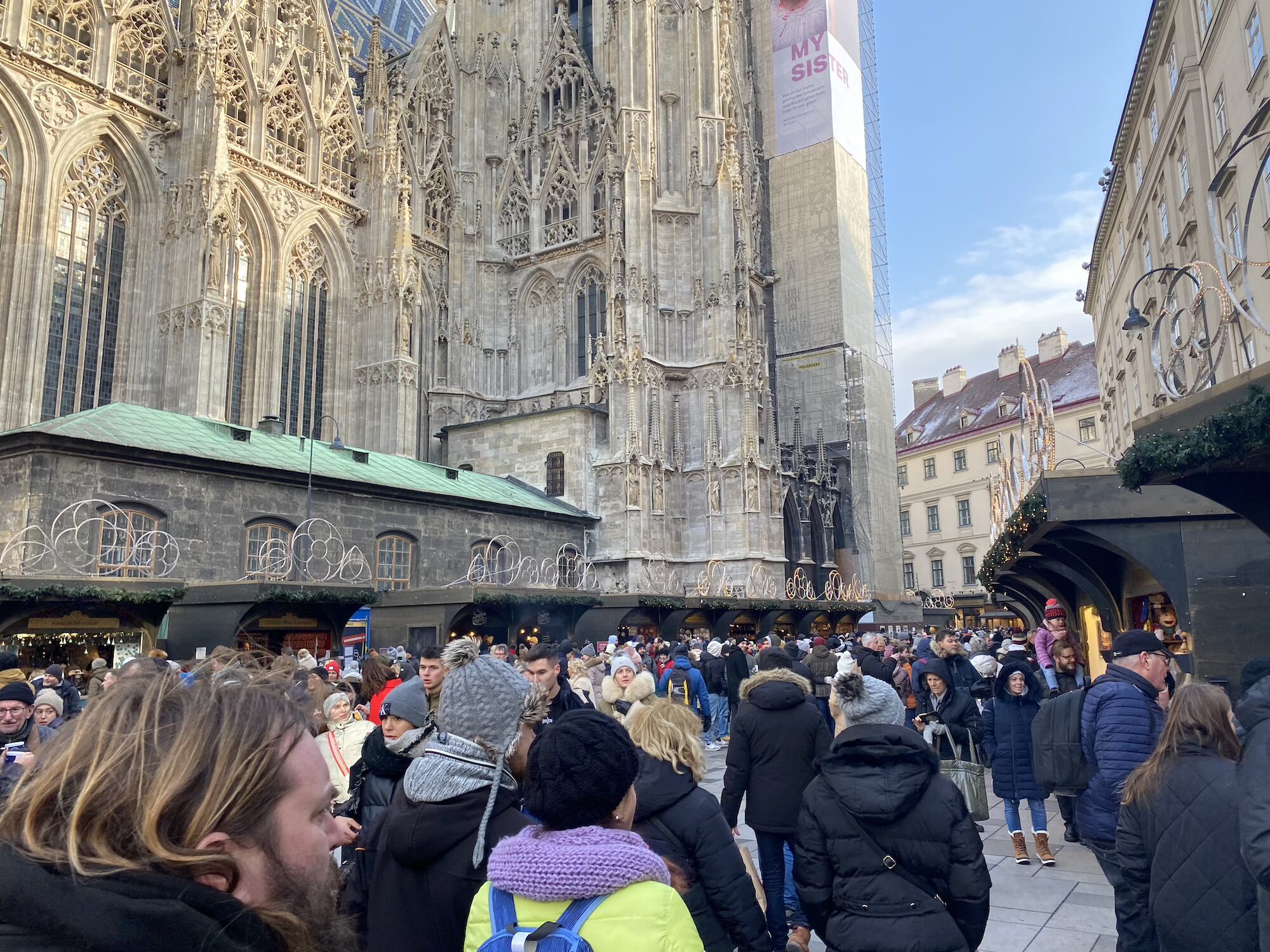
Stephansplatz
Right in the city centre, this market offers cathedral views and holiday charm.

Wintermarkt Prater
Where funfair rides meet festive stalls, this market brings Christmas cheer with a playful twist.
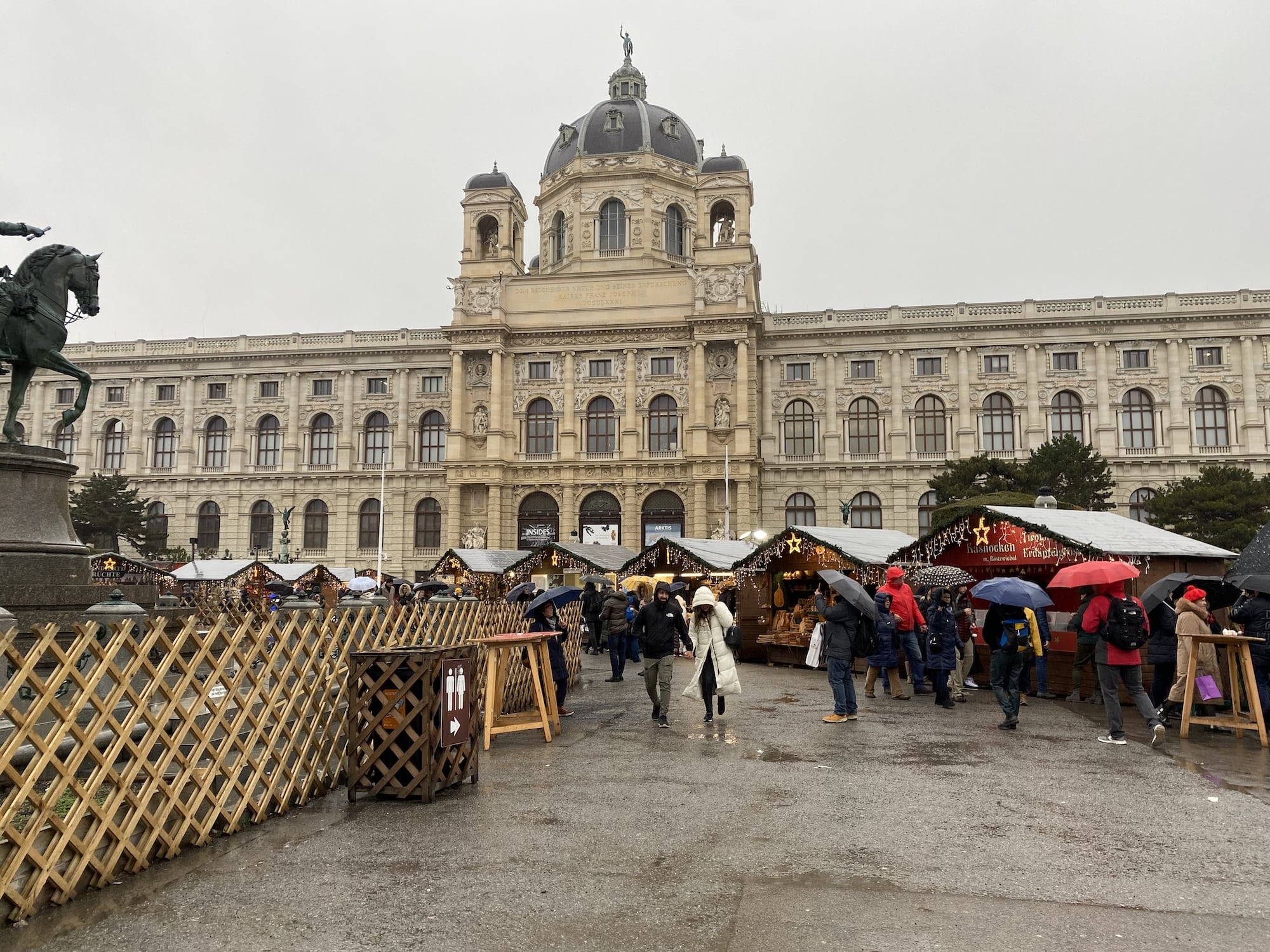
Maria-Theresien-Platz
Set between two grand museums, this market blends imperial elegance with festive light.
A tradition with history
Vienna’s Christmas markets are not an invention. The very first recorded market, the so-called “Krippenmarkt”, dates back to the late Middle Ages, when citizens gathered to buy supplies and festive goods in the run-up to Christmas. Over the centuries, this tradition grew into the beloved Advent markets you see today, blending imperial grandeur with local customs.
Something for everyone
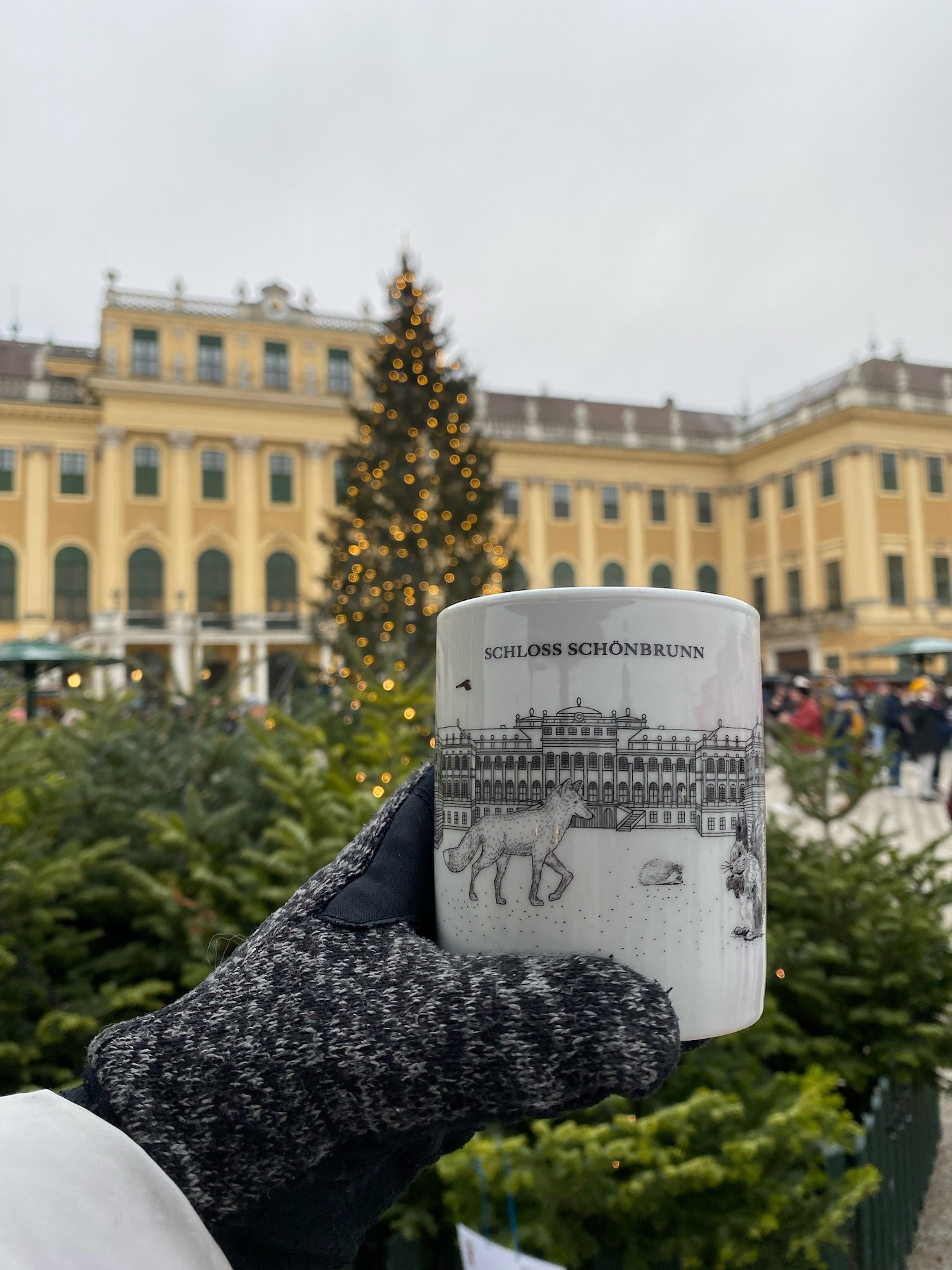
What makes Vienna special is the sheer variety. Families with children love the carousels, workshops, and ice rinks at Rathausplatz. Couples stroll through romantic lanes at Spittelberg or Karlsplatz, where fairy lights sparkle above narrow cobblestones. Art lovers seek the artisan stalls, while foodies indulge in everything from roasted chestnuts to organic, vegan-friendly dishes. Each market has its personality, which makes exploring more than one an essential part of any December visit.
Getting around
Most Christmas markets are easy to reach by Vienna’s excellent public transport. Major squares like Rathausplatz, Karlsplatz, and Schönbrunn Palace all have nearby metro stations, while smaller markets in courtyards or side streets are often just a short walk from the city centre. Because distances are short, you can comfortably visit two or three markets in a single evening—perfect if you want to compare the different atmospheres.
Combine with sightseeing
One of the charms of visiting Vienna’s Christmas markets is how easily they connect with the city’s main sights. A stroll through the festive stalls at Schönbrunn can be perfectly paired with a tour of the palace. The market at Stephansplatz sits right beneath St. Stephen’s Cathedral, making it easy to step inside and admire the Gothic interior. At the Rathausplatz, the giant Christmas market is only a short walk from the Burgtheater and the Austrian Parliament. By combining market visits with Vienna’s historic landmarks, you get the best of both worlds: festive atmosphere and cultural highlights in one outing.
Tips for visiting Vienna’s Christmas markets
Visiting the Christmas markets is more than just strolling past stalls—it’s a full winter experience. The right preparation can make the difference between a magical evening and a cold, exhausting one. From what to wear to where to stay, these practical tips will help you get the most out of your visit.
Dress warmly
December in Vienna means crisp air, frosty evenings, and often a light dusting of snow. While that makes the Christmas lights extra magical, it also means standing still with a mug of punch can get chilly. Layer up with thermal underwear, a good winter coat, and accessories like a wool scarf, gloves, and a warm hat. Locals swear by layering—it’s the easiest way to stay comfortable as you move between outdoor stalls and warm indoor cafés.
Wear comfortable shoes
You’ll easily walk several kilometers when visiting different markets in one evening. Streets and squares can be uneven, with cobblestones or temporary wooden floors around the stalls. Waterproof, sturdy shoes with good grip will keep your feet warm and dry, especially if it snows or rains. High heels or dress shoes might look festive but are usually a regret after an hour on the market grounds.
Plan your stay in advance
Vienna’s Christmas period is one of the busiest times of the year. Hotels near Rathausplatz, Stephansdom, or Schönbrunn are often fully booked weeks in advance, and prices rise the closer it gets to December. If you want to be within walking distance of the major markets, it’s best to book early. Consider a hotel in the 1st or 7th district if you would like to walk between multiple markets in one evening. (We’ve made a special page with the best hotels near Vienna’s Christmas markets—check it out before you book.)
Bring cash
Although more and more stalls accept cards or mobile payments, many small artisans and food vendors still prefer cash, especially for small purchases like cookies, roasted nuts, or handmade ornaments. ATMs can be found near most larger markets, but queues are common in the evenings. Having some small notes and coins ready saves time and hassle.
Watch your belongings
The markets are generally safe, but as with any crowded place, pickpockets can take advantage of the festive bustle. Keep bags zipped, wallets close to your body, and avoid leaving phones in back pockets. A cross-body bag or small backpack worn in front is the safest option.
Stay flexible
It’s tempting to try to tick off all the famous markets in one weekend, but that often leads to rushing and missing the details that make each market unique. Instead, choose two or three markets per evening and give yourself time to enjoy a drink, watch a choir, or browse the craft stalls. Smaller markets like Spittelberg or Karlsplatz really shine when you slow down and let the atmosphere sink in.
Christmas traditions in Vienna
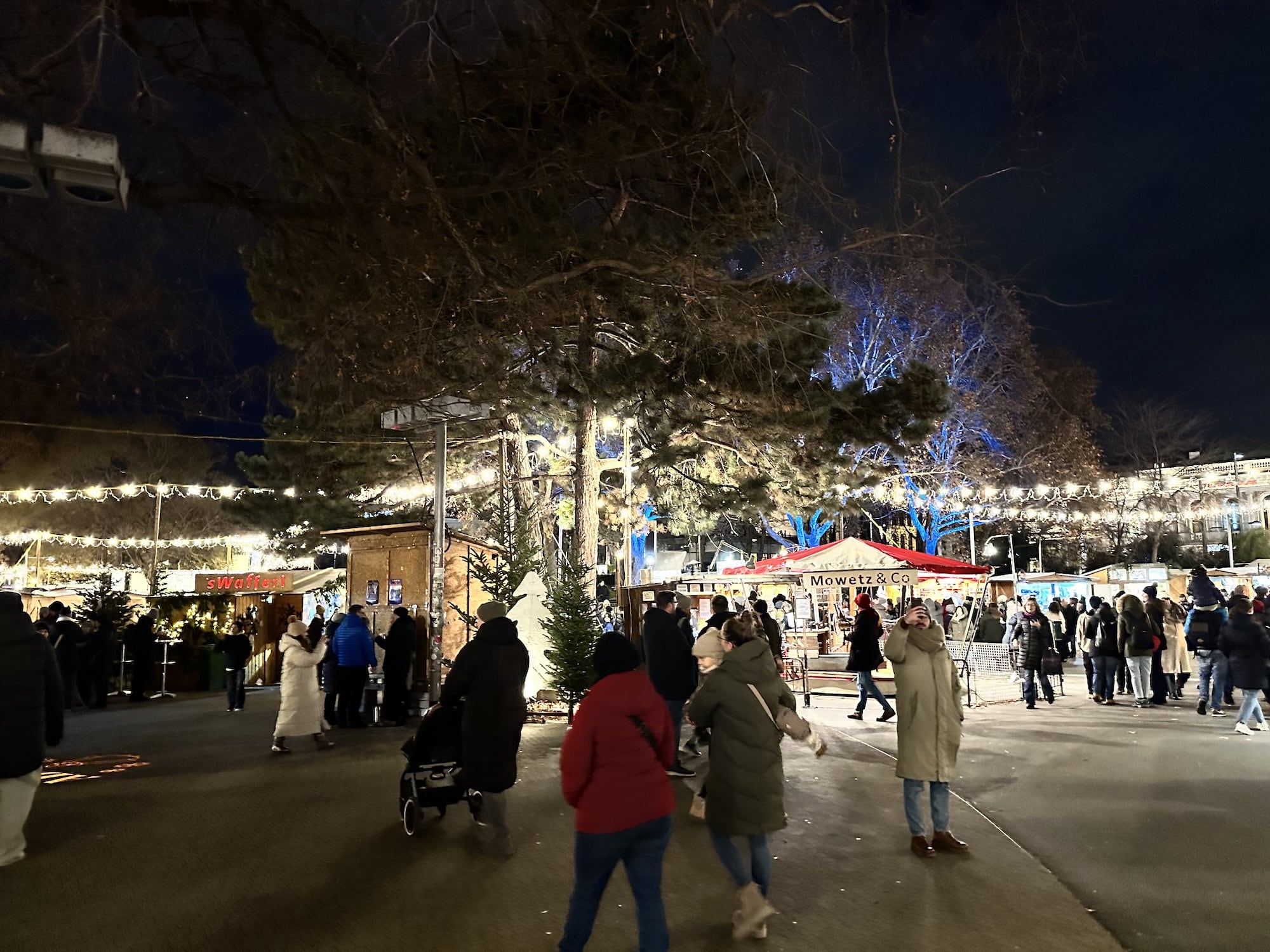
In Austria, and especially in Vienna, gifts traditionally arrive on the evening of 24 December during the Bescherung. The bringer isn’t Santa (Weihnachtsmann), but the Christkind. This figure was introduced in the 16th century by Martin Luther as an alternative to the veneration of saints like St. Nicholas and to shift gift-giving from 6 December to Christmas Eve. The idea spread widely and was later adopted in Catholic regions too, which is why the Christkind remains the prevailing figure in Austria today.
You’ll still encounter St. Nicholas (Nikolo) on 6 December for small treats, but the main presents come with the Christkind on Christmas Eve. In everyday Viennese life this looks very traditional: adults decorate the tree in secret, a bell rings to signal that the Christkind has “visited,” and the family gathers for carols and dinner, often goose or carp, before opening gifts. Tourism and pop culture make Santa visible in Vienna, but the Christkind is the norm in local custom and even in the names of markets (Christkindlmarkt).
A charming Austrian side note is the Christkindl post office in Steyr, Upper Austria, which handles Christmas mail with a special postmark every Advent. It shows how deep the Christkind tradition runs beyond Vienna itself.
Historical note on markets: Vienna’s December fairs go back to medieval privileges around 1296, though historians caution these were winter fairs rather than today’s Advent markets. The modern Viennese “Christkindlmarkt” identity emerged much later.
Although in English, we usually speak of “Christmas markets,” in Vienna you’ll regularly see the term Christkindlmarkt. This literally means “Christ Child market” and refers to the tradition that it is the Christkind, not Santa Claus, who brings the gifts on Christmas Eve. The name underlines how closely these markets are tied to Austrian Christmas customs. For international visitors, it’s easiest to think of them simply as Christmas markets, but knowing the local word adds a bit of cultural insight.
